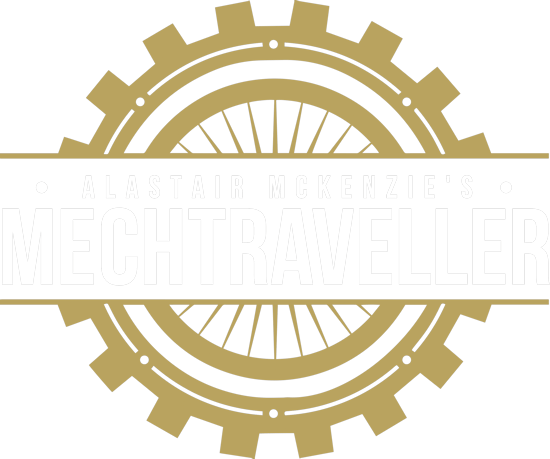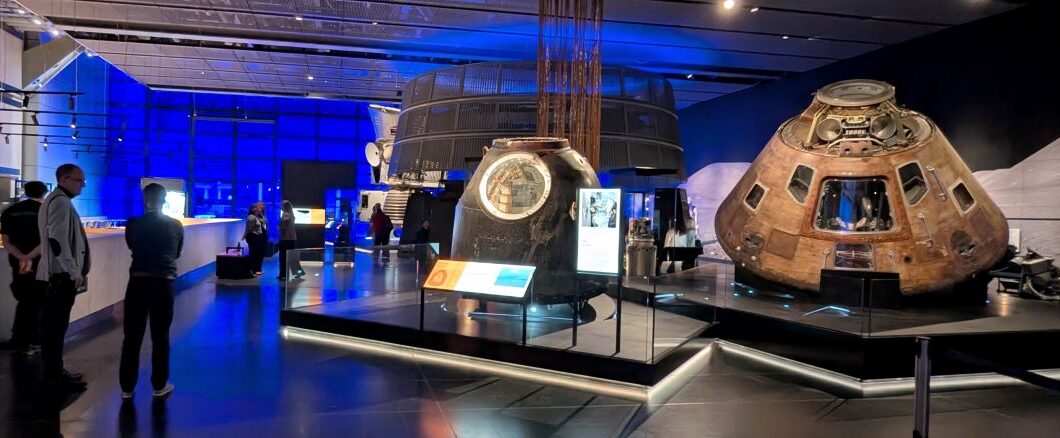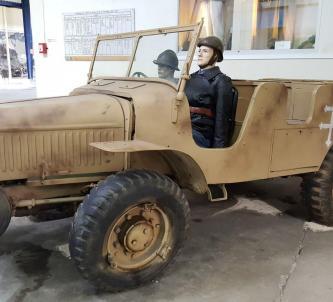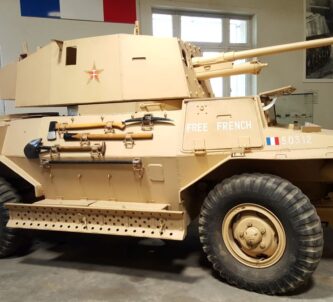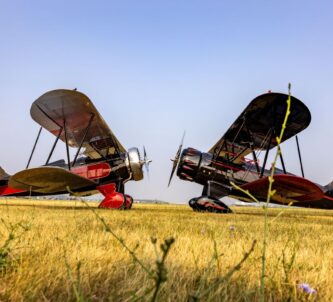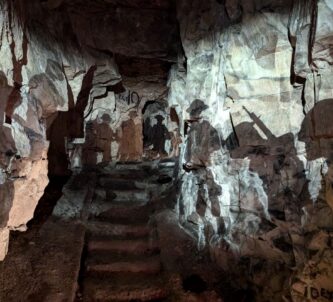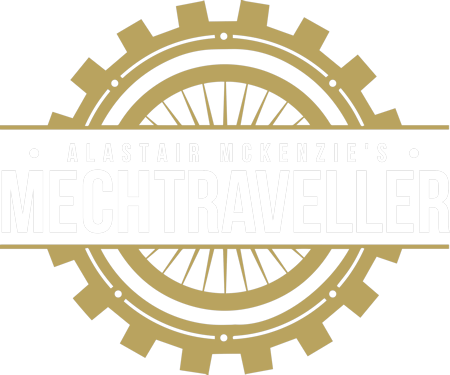London’s Science Museum has today (20 Sep 2025) opened its new ‘Space’ gallery showcasing some historic pieces of space equipment, together with some new technologies from the UK space industry.
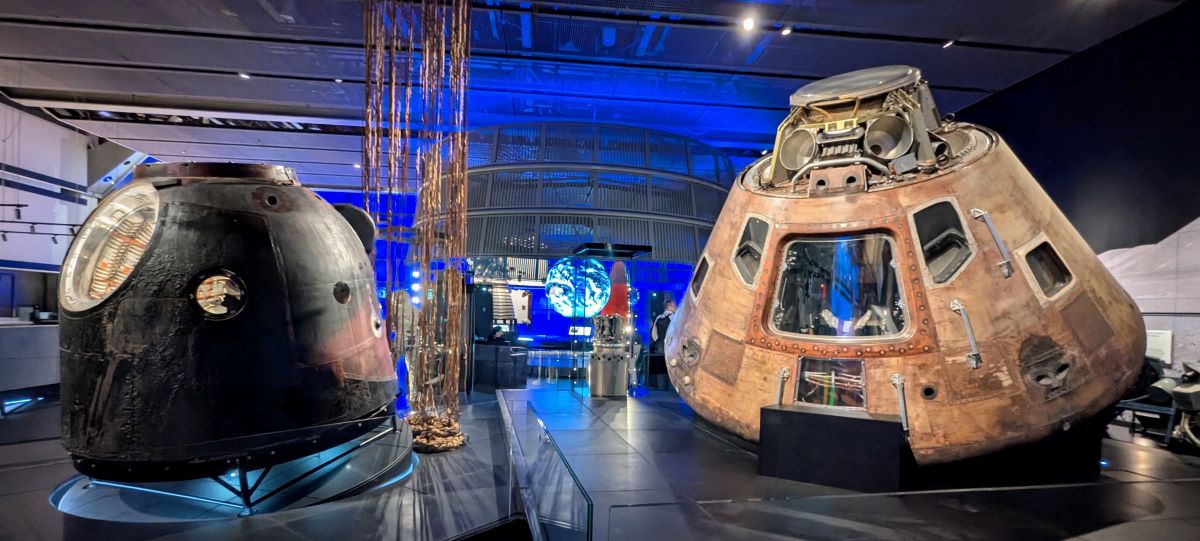
The ‘stars of the show’ are two historic space vehicles: the Soyuz TMA-19M Descent Module and the Apollo 10 Command Module. Both of these are the ‘real deal’ and have the fiery scorch marks from re-entry to prove it!
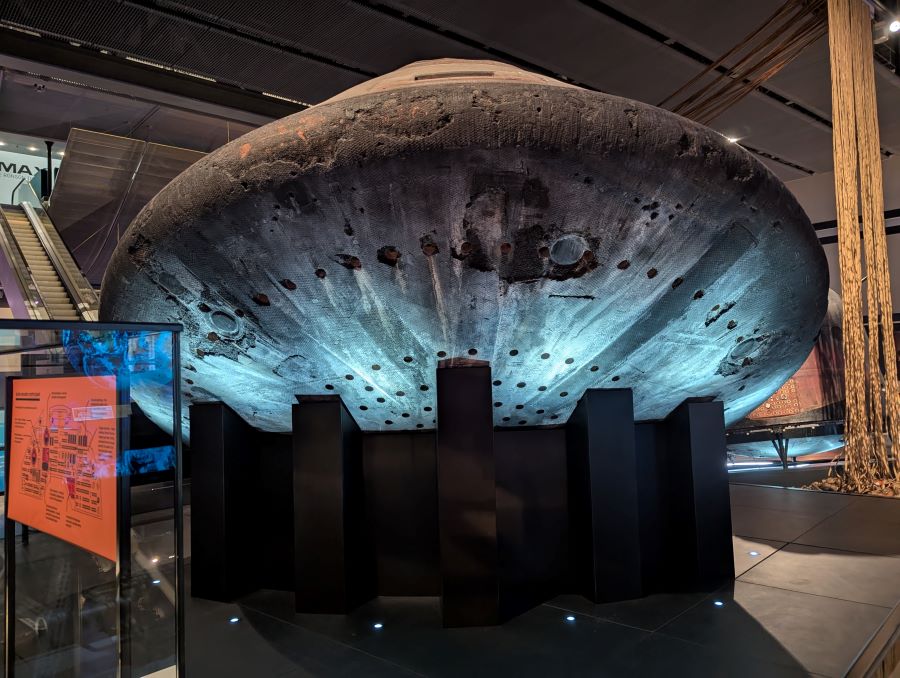
The Soyuz capsule is the actual spacecraft that took astronauts Yuri Malenchenko, Tim Kopra and Britain’s Tim Peake up to the ISS in 2015 and then returned them safely to the Earth the following year. It’s the first human-piloted spacecraft acquired by the UK’s Science Museum Group, and it is displayed along with its huge 25m-wide parachute, which slowed the descent speed from 287km per hour to just 22km per hour ahead of a soft landing on the steppe of Kazakhstan.
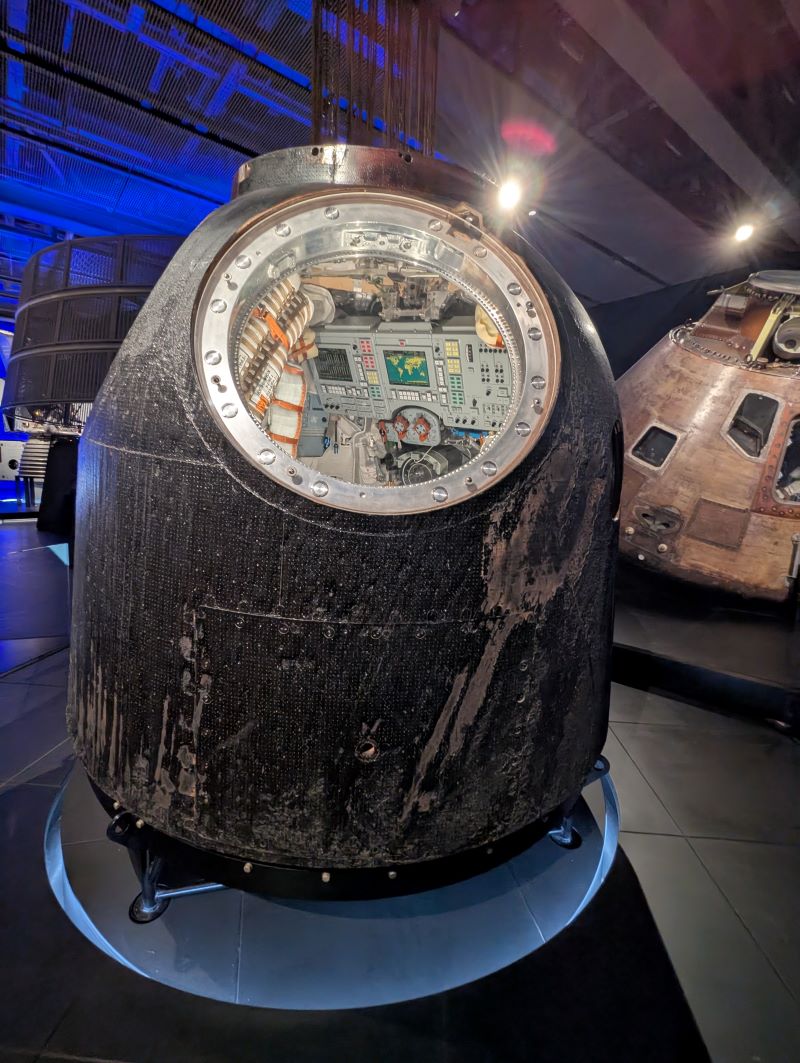
Apollo 10 was the NASA mission that pre-tested everything that Neil Armstrong’s Apollo 11 did… except land on the moon. Commander Thomas Stafford and astronaut Gene Cernan flew the Apollo 10 Lunar Module down to within 14.4 kilometres (9 miles) of the lunar surface before returning to rendezvous with the Command & Service Module (CSM).
How tempting it must have been to keep going!
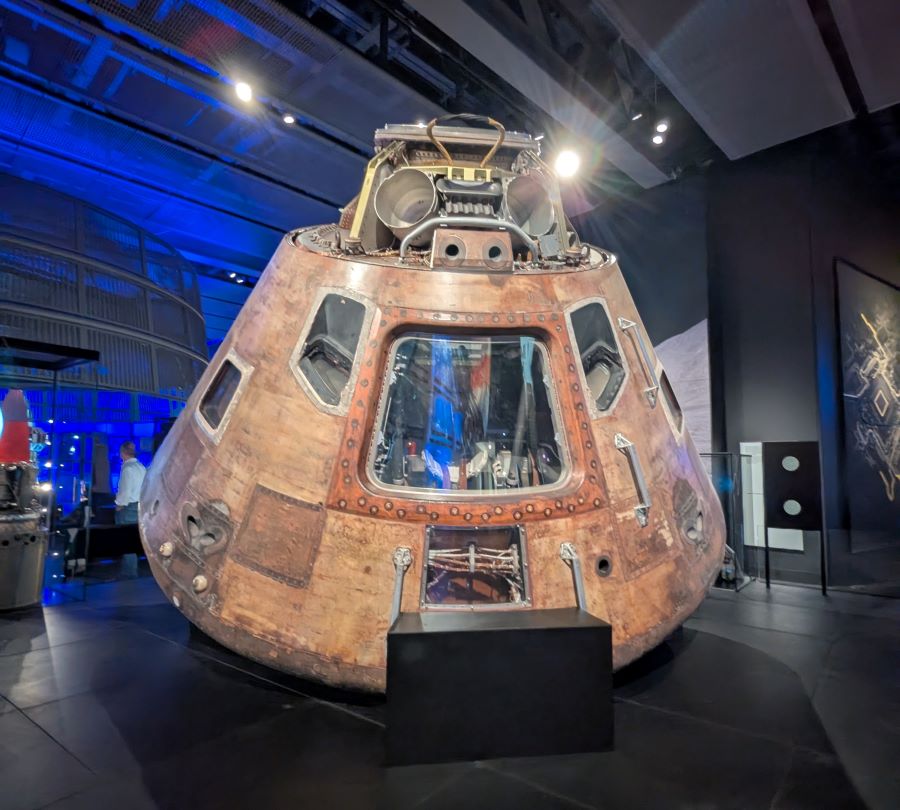
Of course, Gene Cernan, did get down there in the end, as commander of Apollo 17, the last mission to land on the moon. And there’s a fabulous larger-than-life panoramic photograph taken by him of the Apollo 17 Lander, Moon Buggy, and astronaut/geologist Harrison Schmitt, which stretches 20 metres along the gallery wall.
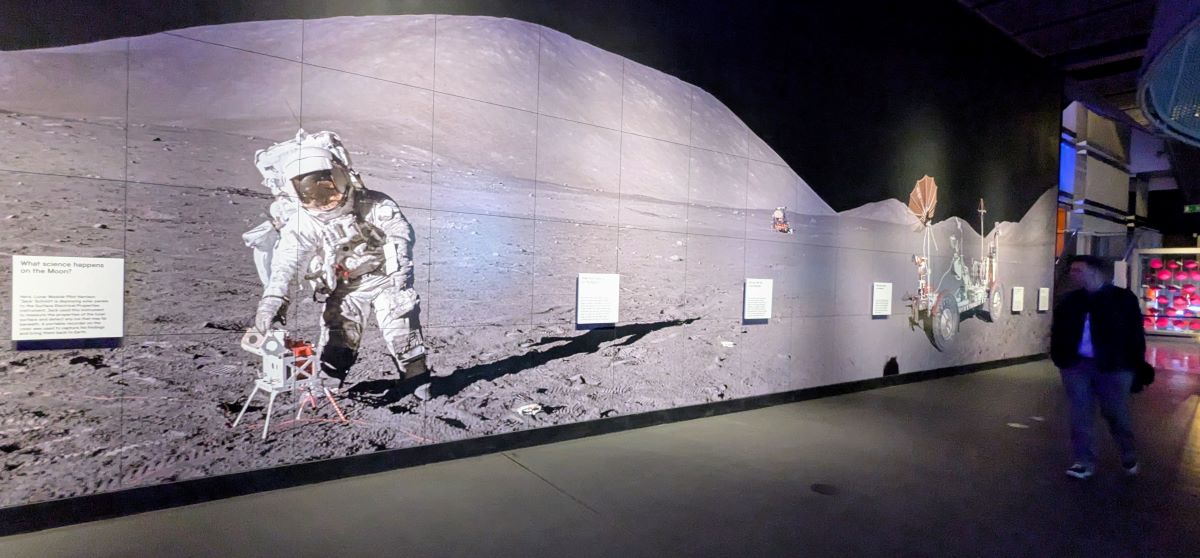
Anecdote
Eugene “Gene” Cernan (1934 – 2017) had an amazing career, first as a naval aviator and aeronautical engineer, then as an astronaut with NASA, flying three times into space on Gemini 9, Apollo 10 and as commander of Apollo 17, which made him the last man to ever set foot on the moon.
In 1998 I met Gene Cernan at a travel convention in Chicago. He was there promoting the Kennedy Space Centre in Florida. I spent just over ten minutes interviewing him for my radio programme. Over the years I’ve met and interviewed a lot of famous and extraordinary people, but I have to say Gene Cernan was by far and away the most impressive.
Two things fired him up: the importance of educating and enthusing the next generation about space and the need for humans to get back to the moon. My takeaway moment from that interview was his recounting of his time on the moon. “Yeah, those other guys all landed on the lunar flatlands. We landed at the bottom of a narrow, 1.5 km deep valley!”
A few hours later, white wine glass in hand, I was wandering around at a press reception in the Chicago Science Museum, when I came across a small illuminated display case containing a piece of rock “lifted from the surface of the moon by Commander Eugene Cernan – Apollo 17”! It was a surreal moment!
The Science Museum’s Space gallery also includes a piece of moon rock. In this case, collected by Apollo 15’s David Scott in 1971. It is estimated to be over 3 billion years old.
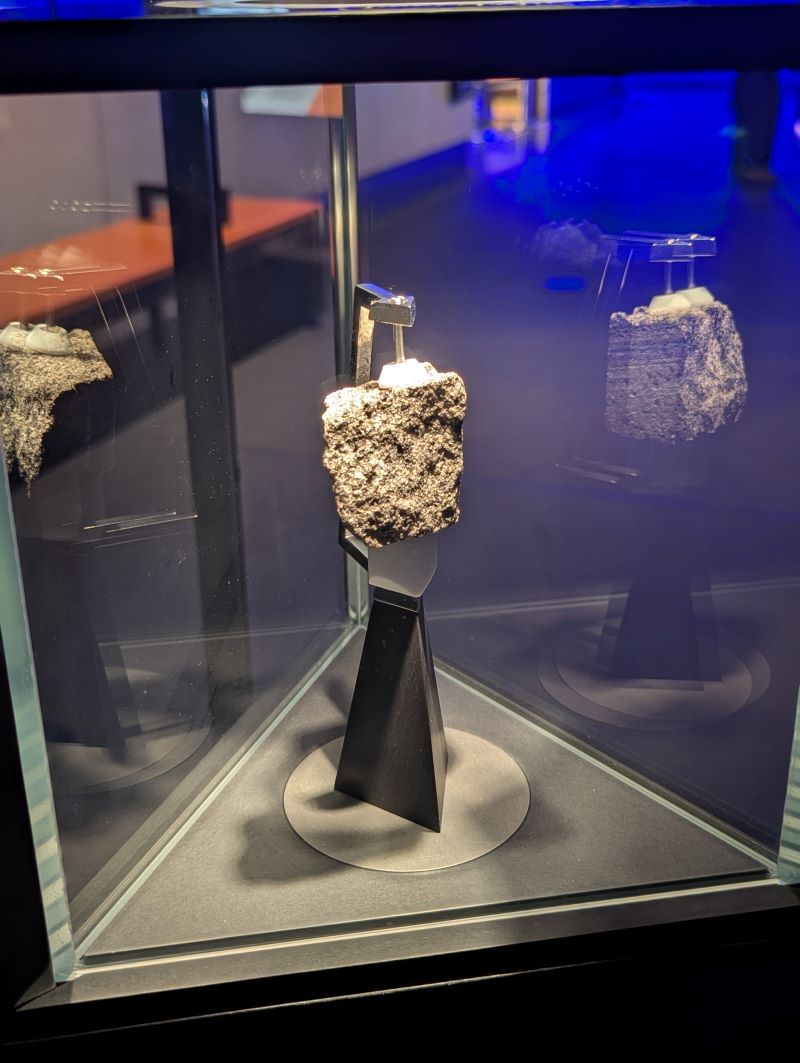
There are other items from the Apollo programme: a totally fascinating control console for an Apollo Command Module. It didn’t go into space. It was a simulator used to train astronauts.
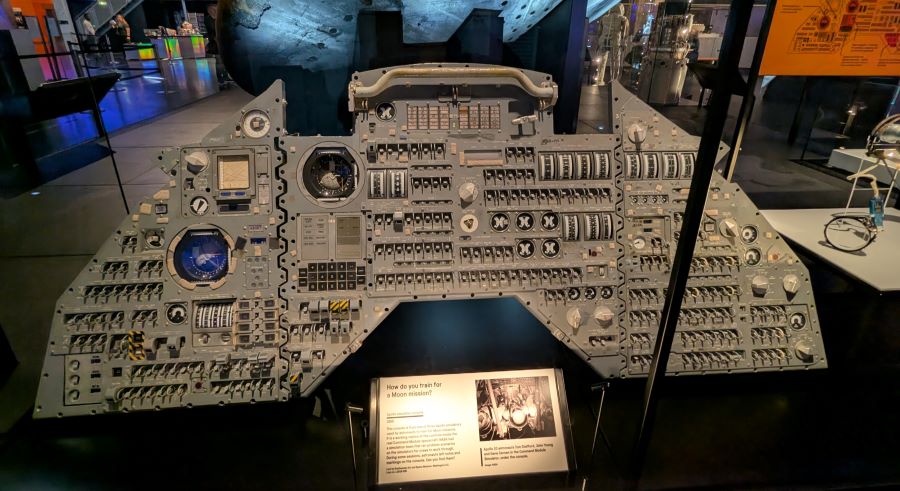
A J2 rocket engine. These were the powerful engines that powered the Saturn V rocket second & third stages for the Apollo missions. The one on display was the single third stage J2 for Apollo 9.
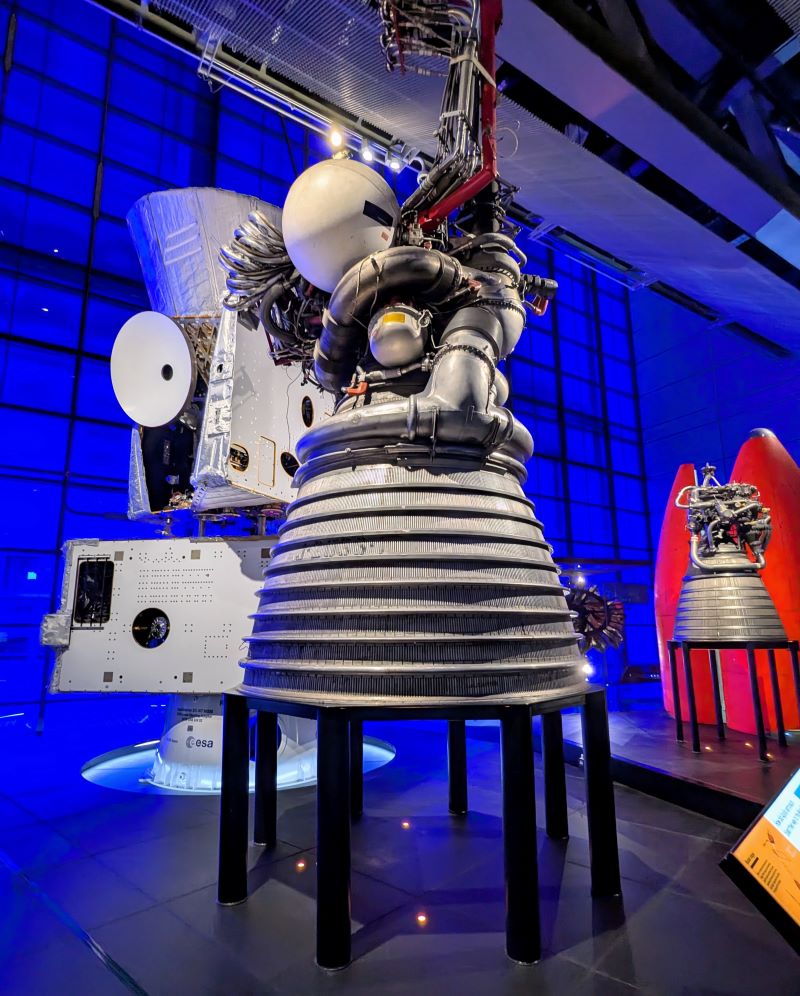
And an Apollo fuel cell which provides electricity & water for an Apollo Service Module. Yes, that’s the notorious unit (not this one) that exploded on Apollo 13, forcing the crew into survival mode for a nail-biting 3 days and 15 hours while they tried – in the end, successfully – to get home.
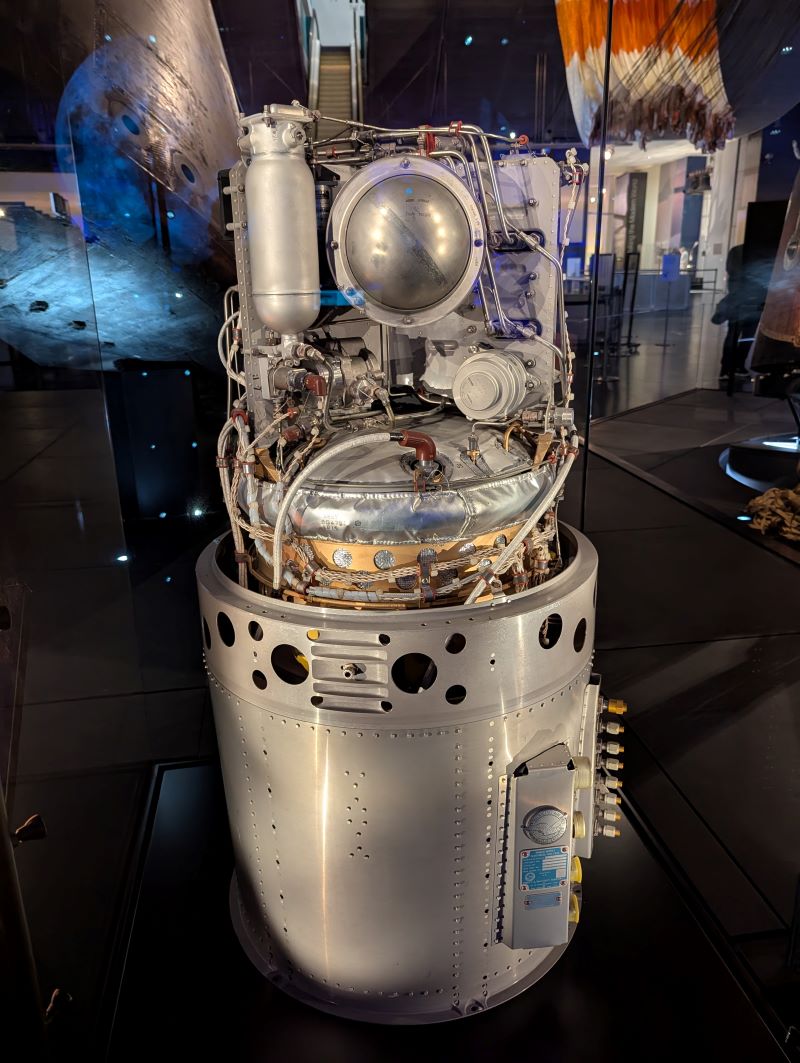
The largest item in the gallery is a 6 metre high, full-scale test version of the BepiColombo vehicle.
BepiColombo is up there now. It has almost completed its mission to study Mercury. The joint European Space Agency (ESA) and Japan Aerospace Exploration Agency (JAXA) mission to the planet Mercury, set off, on a French Arianne V rocket in Oct 2018. It has already completed a flyby of Earth, two flybys of Venus, and six flybys of Mercury. It is now building up to its insertion into a polar orbit around Mercury in November 2026.
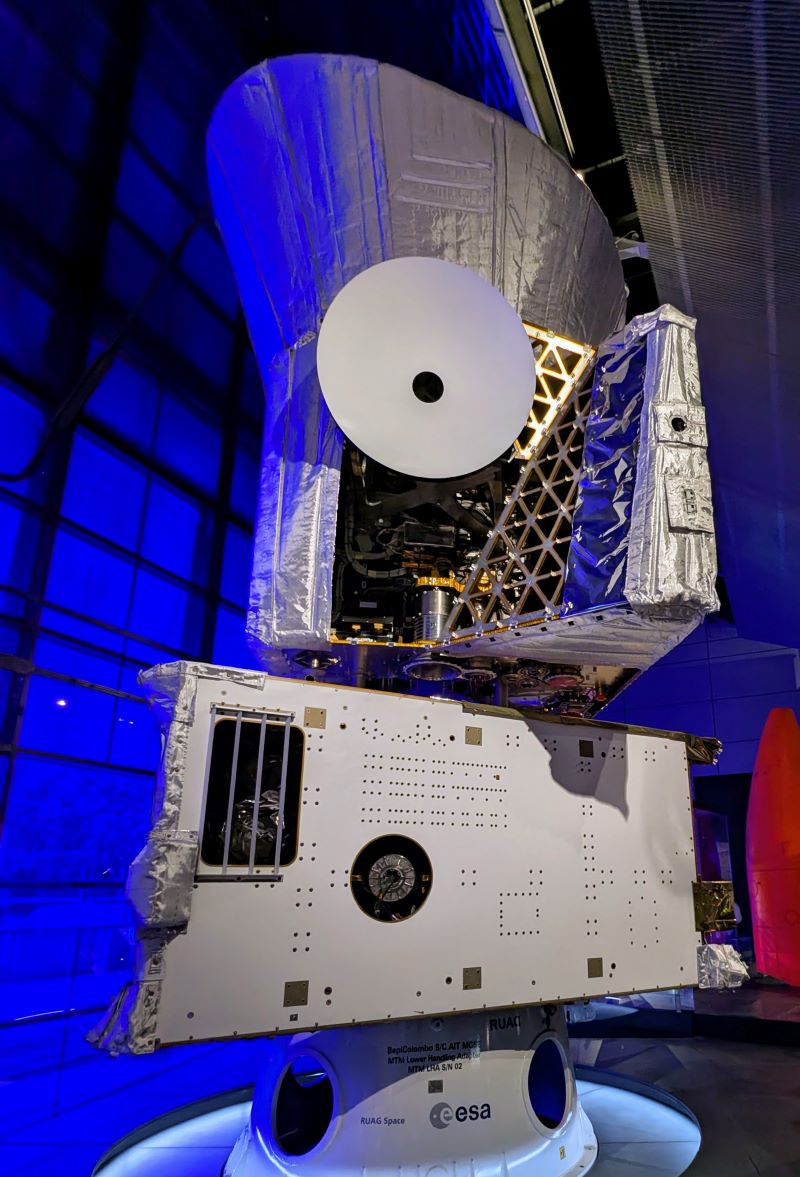
This test version was used to see if the vehicle could stand up to the extreme vibrations at launch and temperatures as high as 450°C.
The gallery also features another Japanese innovation. Developed in part by the company behind Transformers and Furbys – in the first, and so far only, collaboration between a space agency (JAXA) and a toy company (Takara Tomy) – the LEV-2 is the smallest rover to operate on the Moon and employed a novel way to autonomously move. The LEV-2’s round outer-sphere separates and then the halves function as wheels. It was dubbed the ‘rolly-polly probe’ by the press.
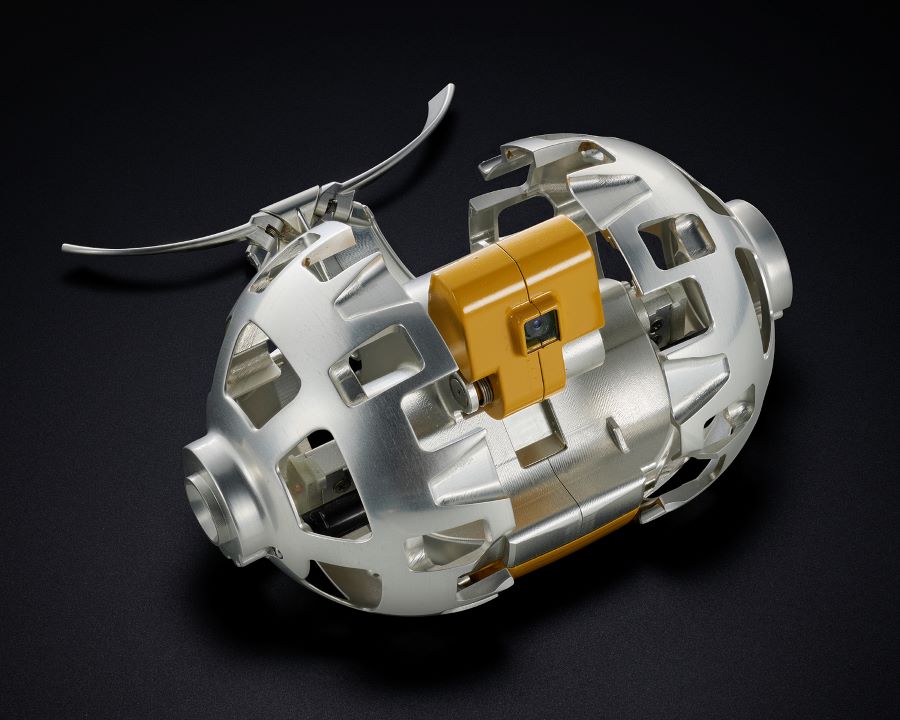
On display in the UK for the first time, this is the model used to test the movement of the rover.
It shares a display cabinet with another well-known brand name that may be seen on the moon.
If and when a base is established on the moon, it will need more than solar panels to power it. It’ll need nuclear power, and Rolls Royce have come up with a concept model for a miniaturised nuclear power plant.
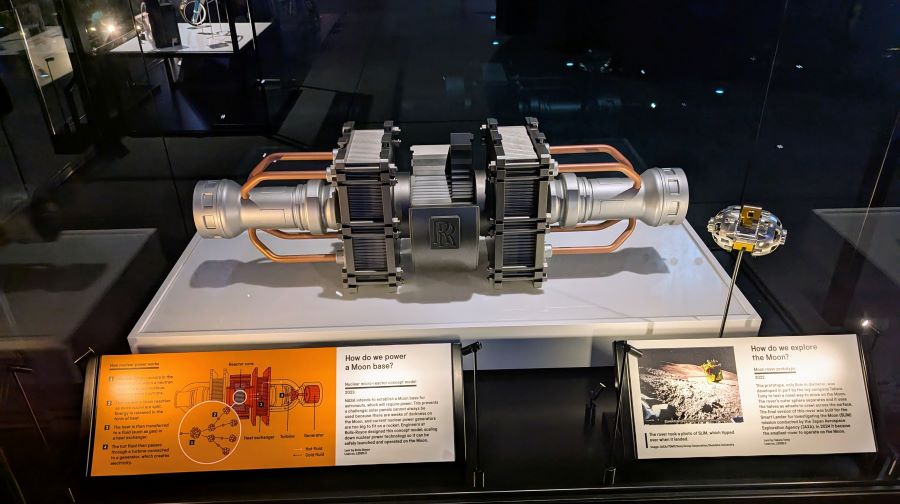
Although the gallery has international space memorabilia, there is also an emphasis on British achievements and contributions to the space industry, made for example by astronauts like Helen Sharman OBE, our first astronaut.
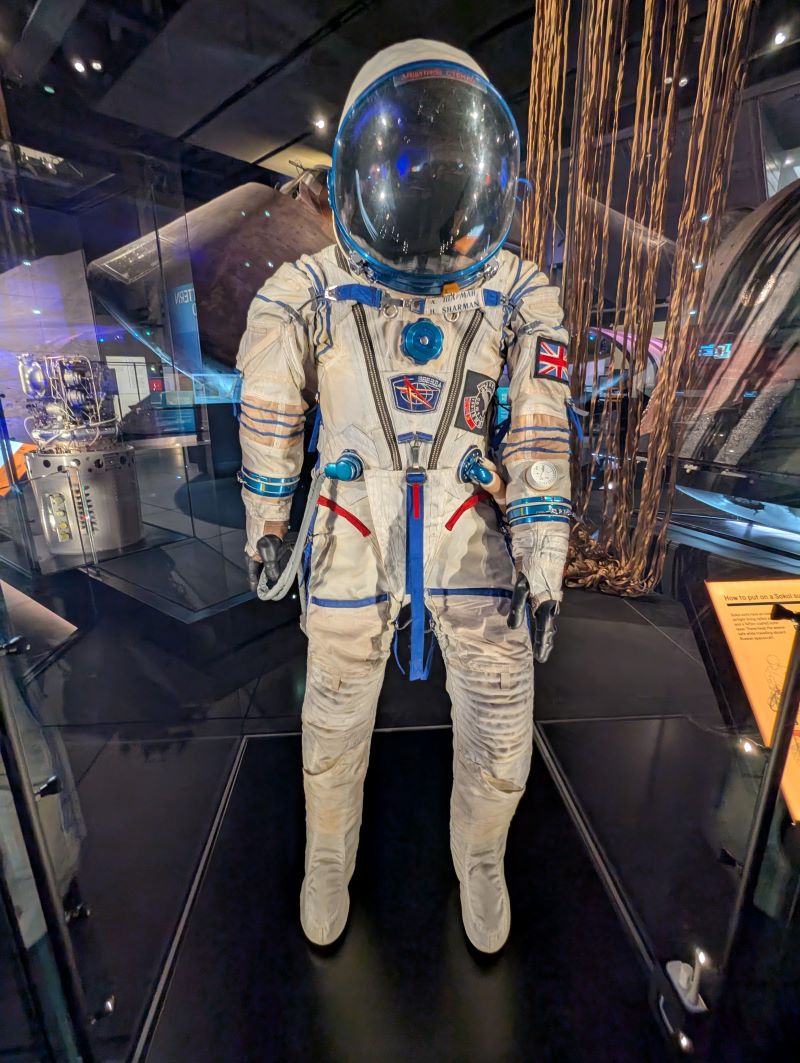
Her Sokol KV2 spacesuit, which she wore on her mission to the Mir space station in 1991 is on display, and it is she who provides the fascinating voice-over description of Mercury, Mars and other planets and moons in the Solar System, projected onto a large sphere at the heart of the gallery.
Two of the most interesting new developments come from small British companies…
- A prototype plasma propulsion system by Oxfordshire start-up Magdrive, which would allow small satellites to quickly and easily manoeuvre while in orbit. The first of these prototypes was developed by one of the founders in his daughter’s bedroom during the COVID-19 pandemic lockdown. The technology heats tiny bits of solid metal into a hot gas to produce powerful bursts of thrust.
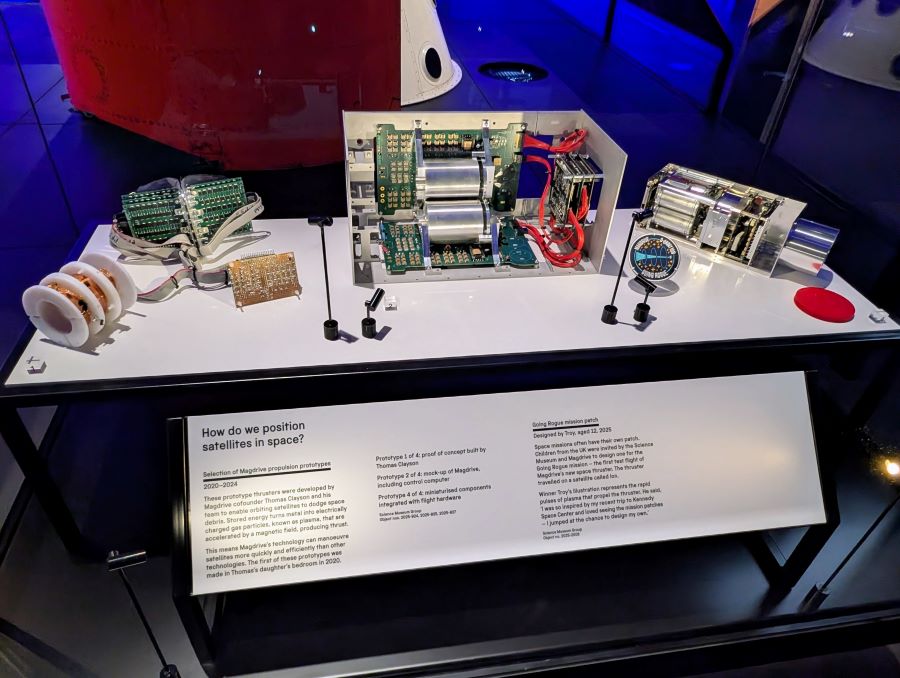
- A prototype heat shield developed by Welsh company Space Forge to protect materials manufactured in orbit as they are transported to Earth is also on display for the first time. Commercial space return vehicles currently use heat shields which require replacement after every flight. In contrast, Space Forge’s Pridwen heat shield is made of a high temperature alloy which is large enough to radiate the heat of re-entry away without burning the material. This prototype represents an opportunity to develop a fully reusable shield.
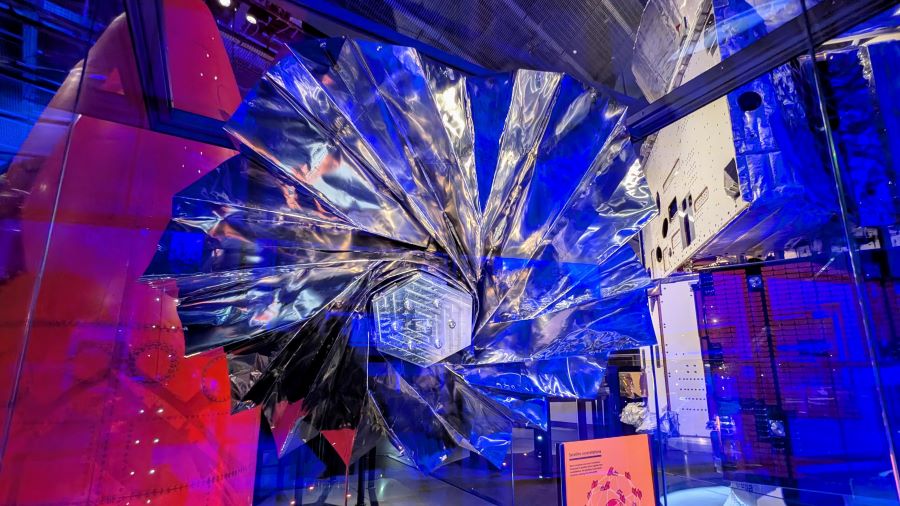
Sir Ian Blatchford, Director and Chief Executive of the Science Museum Group, said: “As a species, we’ve always looked to the stars. I have no doubt that the wonders of space we showcase in our new gallery will inspire and thrill a new generation of visitors. Whether you’re fascinated by the engineering behind space exploration, inspired by stories of space pioneers, or simply curious about the planets, Space invites you to delve into humanity’s greatest adventure.”
The Space gallery is a permanent gallery in the museum, which means it’s likely to be around for 5+ years. It can be found in the West Hall on Level 0. The Science Museum is free, but they take bookings to smooth out queues.
